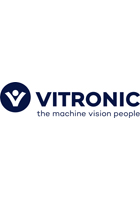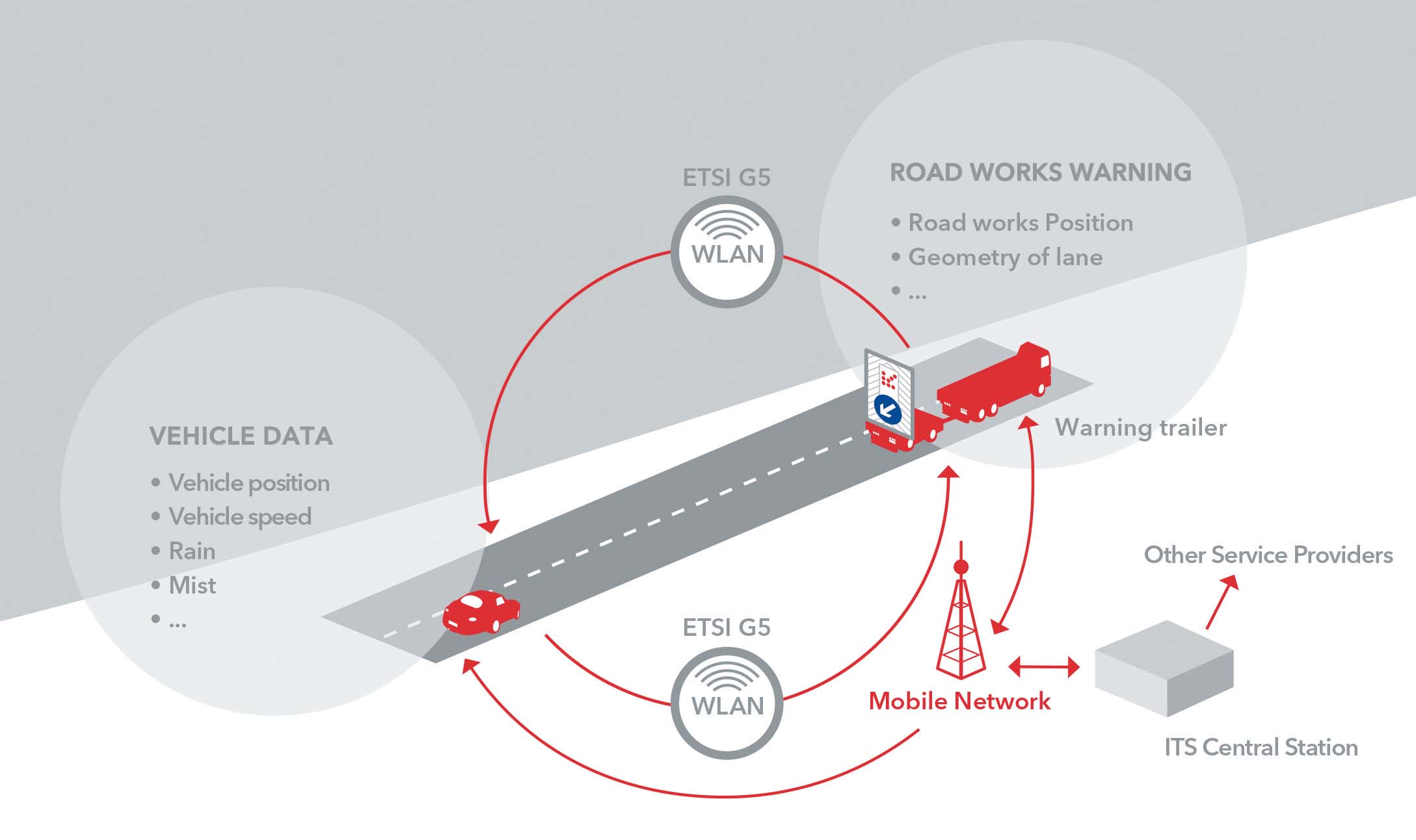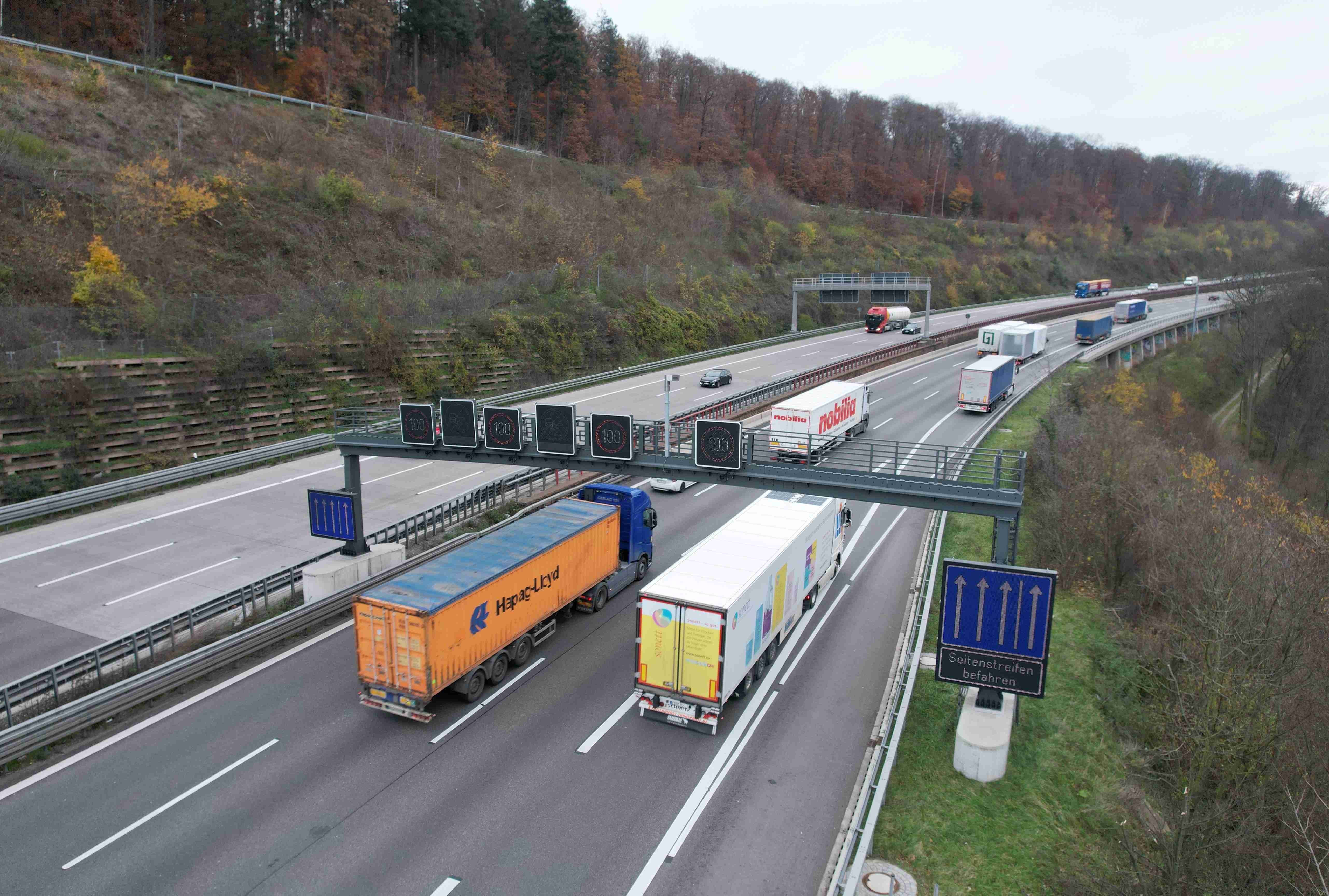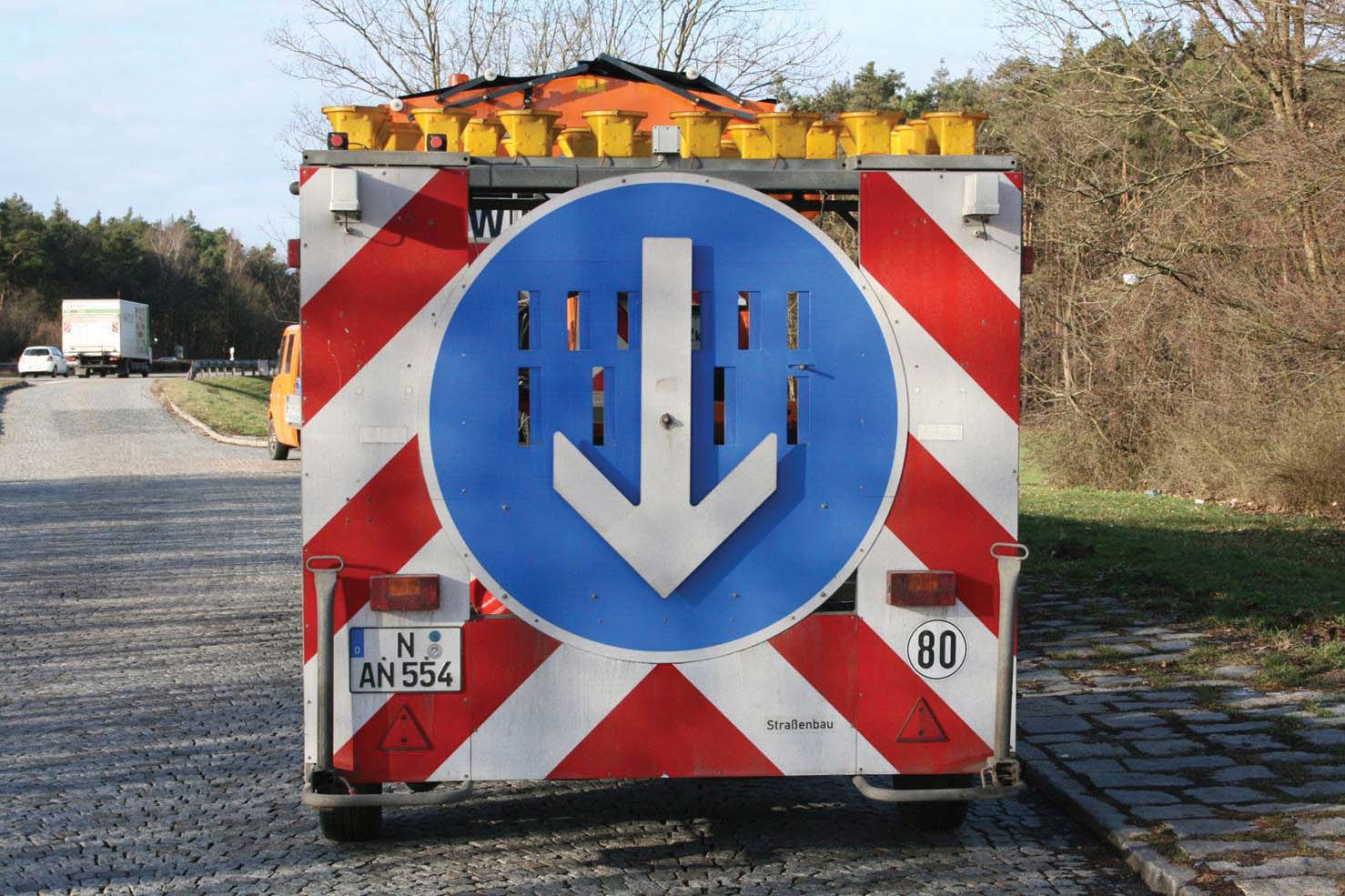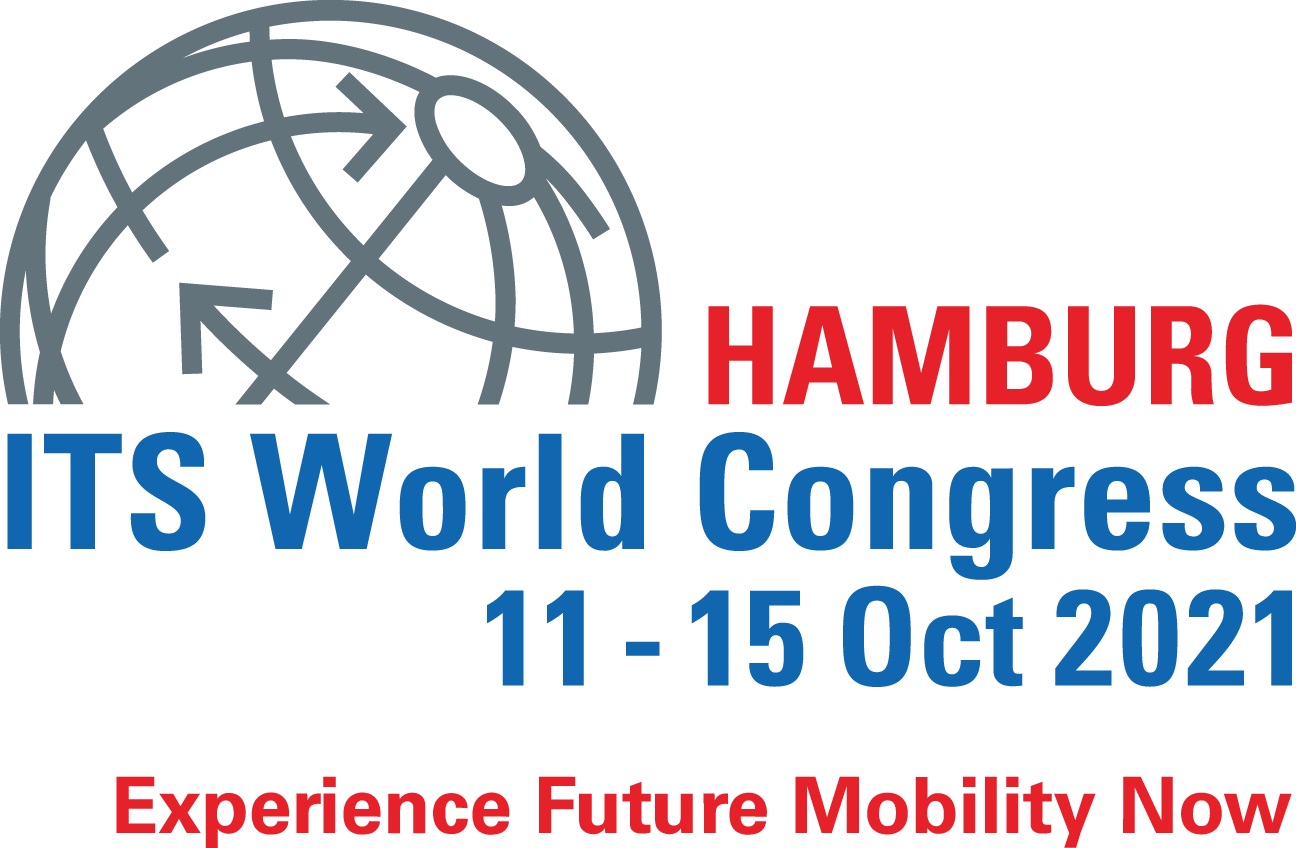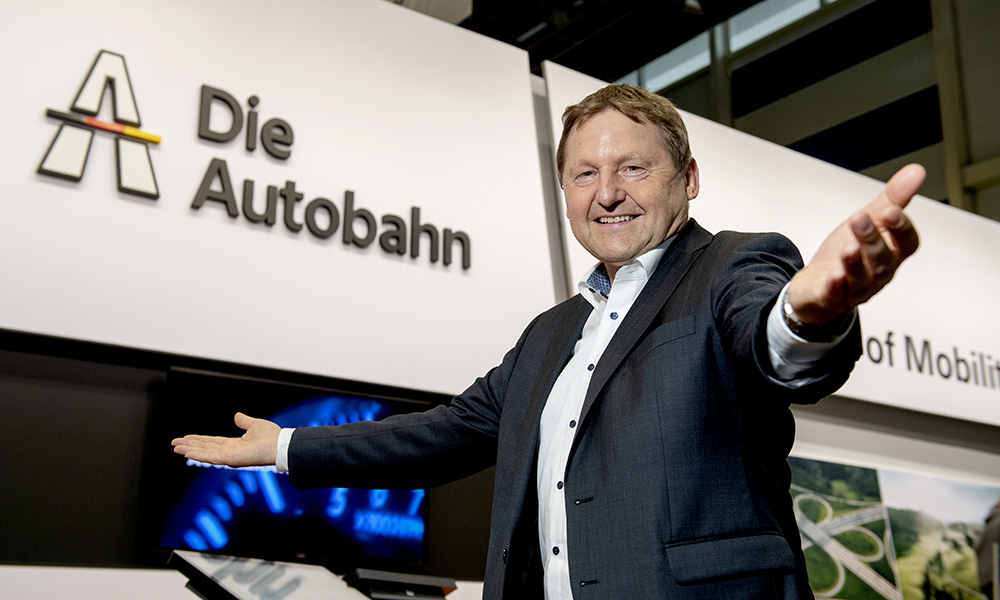
Autobahn, which itself officially kicked off on 1 January this year, has its own goals, says Gerd Riegelhuth, head of traffic management and operations at the organisation. Autobahn is responsible for 13,000km of motorways throughout Germany, including 28,000 bridges, 550 tunnels and around 6,300 ongoing highway projects. The authority is using ITS World Congress to introduce itself to the international road sector.
Setting up Autobahn was more than two years in the process, explains Riegelhuth: “It has been a challenge to integrate 16 federal autobahn agencies into the first single German federal road authority.” For example, each state had its own traffic management centre. There is now one “master centre”, in Essen, and eight regional centres in large metropolitan areas including Munich, Berlin, Stuttgart and Leverkusen. One of the first goals for the authority was to demonstrate the possibility of V2X and V2V technologies in a roadworks situation. Certain Volkswagen models rolled off the production line earlier this year, equipped with on-board technology that picked up signals from roadside units warning the drivers to slow down.
Another goal involved setting up an autonomous truck driving along a motorway shoulder carrying a roadworks warning arrow to indicate a lane change for approaching drivers. Autobahn is now in discussions with the sector about more projects and how to create standards for operating the technology.
National road agencies across Europe have welcomed Autobahn, he concludes, because they now have only one authority to work with regarding setting up communication standards for V2V and V2X: “You should be able to drive from Sweden to Portugal and other places with the assurance that your technology will work for you.”
Stand B5.440



